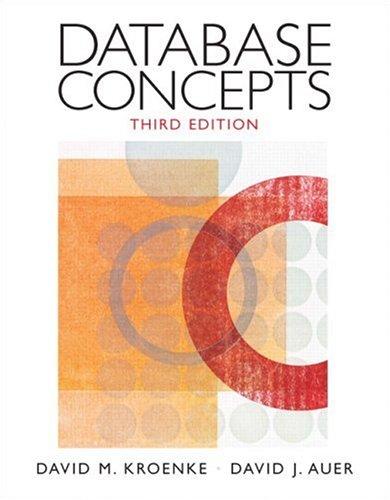Question
java only no c++ Write a Fraction class whose objects will represent fractions. You should provide the following class methods: Two constructors, a parameter-less constructor
java only no c++
Write a Fraction class whose objects will represent fractions. You should provide the following class methods:
Two constructors, a parameter-less constructor that assigns the value 0 to the Fraction, and a constructor that takes two parameters. The first parameter will represent the initial numerator of the Fraction, and the second parameter will represent the initial denominator of the Fraction.
Arithmetic operations that add, subtract, multiply, and divide Fractions. These should be implemented as value returning methods that return a Fraction object. They should be named addedTo, subtract, multipliedBy, and dividedBy.
A boolean operation named isEqualTo that compares two Fraction objects for equality.
An output operation named print that displays the value of a Fraction object on the screen in the form numerator/denominator.
Your class should have exactly two private data members, one to represent the numerator of the fraction being represented, and one to represent the denominator of the fraction being represented.
When adding or subtracting Fractions, remember that you must first find the common denominator. The easy way to do this is to multiply the denominators together and use that product as the common denominator.
I am providing a client program for you below. You should copy and paste this into a file and use it as your client program. The output that should be produced when the provided client program is run with your class is also given below, so that you can check your results. Since you are not writing the client program, you are not required to include comments in it.
I strongly suggest that you design your class incrementally. For example, you should first implement only the constructors and the output method, and then test what you have so far. Once this code has been thoroughly debugged, you should add additional class methods, testing each one thoroughly as it is added. You might do this by creating your own client program to test the code at each stage; however, it would probably be better to use the provided client program and comment out code that relates to class methods that you have not yet implemented.
As you can see from the sample output given below, you are not required to change improper fractions into mixed numbers for printing. Just print it as an improper fraction. You are, however, required to reduce fractions, as illustrated in the sample output. Make sure that your class will reduce ANY fraction, not just the fractions that are tested in the provided client program. Fractions should not be simply reduced upon output, they should be stored in reduced form at all times. In other words, you should ensure that all fraction objects are reduced before the end of any class method. You are also not required to deal with negative numbers, either in the numerator or the denominator.
You must create your own algorithm for reducing fractions. Don't look up an already existing algorithm for reducing fractions or finding GCF. The point here is to have you practice solving the problem on your own. In particular, don't use Euclid's algorithm. Don't worry too much about efficiency, just create something of your own that works correctly on ANY fraction.
Here is the client program. It must be in a separate file from your class.
public class ChangeThisClassName { public static void main(String[] args) { Fraction f1 = new Fraction(9,8); Fraction f2 = new Fraction(2,3); Fraction result = new Fraction(); System.out.print("The result starts off at "); result.print(); System.out.println(); System.out.print("The product of "); f1.print(); System.out.print(" and "); f2.print(); System.out.print(" is "); result = f1.multipliedBy(f2); result.print(); System.out.println(); System.out.print("The quotient of "); f1.print(); System.out.print(" and "); f2.print(); System.out.print(" is "); result = f1.dividedBy(f2); result.print(); System.out.println(); System.out.print("The sum of "); f1.print(); System.out.print(" and "); f2.print(); System.out.print(" is "); result = f1.addedTo(f2); result.print(); System.out.println(); System.out.print("The difference of "); f1.print(); System.out.print(" and "); f2.print(); System.out.print(" is "); result = f1.subtract(f2); result.print(); System.out.println(); if (f1.isEqualTo(f2)){ System.out.println("The two Fractions are equal."); } else { System.out.println("The two Fractions are not equal."); } Fraction f3 = new Fraction(12, 8); Fraction f4 = new Fraction(202, 303); result = f3.multipliedBy(f4); System.out.print("The product of "); f3.print(); System.out.print(" and "); f4.print(); System.out.print(" is "); result.print(); System.out.println(); } } This client should produce the output shown here:
The result starts off at 0/1 The product of 9/8 and 2/3 is 3/4 The quotient of 9/8 and 2/3 is 27/16 The sum of 9/8 and 2/3 is 43/24 The difference of 9/8 and 2/3 is 11/24 The two fractions are not equal. The product of 3/2 and 2/3 is 1/1
You may not change the client program in any way, except that you may change the name of the main class. Changing the client program in any other way will result in a grade of 0 on the assignment.
You do not need to submit your client file. Execute your program and copy/paste the output into the bottom of your Fraction.java file, making it into a comment. Use the Assignment Submission link to submit the file. When you submit your assignment there will be a text field in which you can add a note to me (called a "comment", but don't confuse it with a Java comment). In this "comments" section of the submission page let me know whether the program works as required.
Step by Step Solution
There are 3 Steps involved in it
Step: 1

Get Instant Access to Expert-Tailored Solutions
See step-by-step solutions with expert insights and AI powered tools for academic success
Step: 2

Step: 3

Ace Your Homework with AI
Get the answers you need in no time with our AI-driven, step-by-step assistance
Get Started


